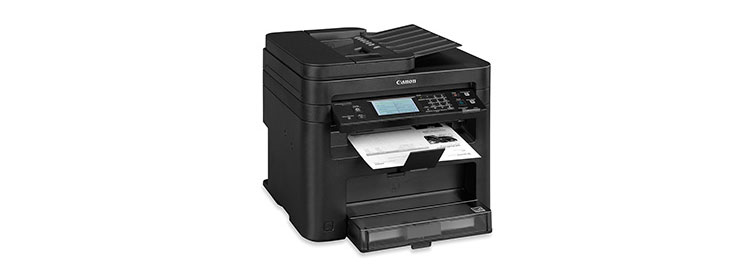Even though the Brother HL-L2380DW monochrome laser multifunction printer (MFP) ($199.99) can scan and copy, Brother groups it on its website with single-function printers. The company treats it that way because it lacks an automatic document feeder (ADF), which limits its copying and scanning to manually placing pages on its letter-size flatbed. Whether you think of it as an MFP or as a single-function printer with convenience features, however, it’s of most interest if your primary need is printing, but you can also make use of its extremely light-duty copy and scan capability.
Much like the Canon imageClass MF212w$109.00 at WalMart that I recently reviewed, the HL-L2380DW$138.00 at Amazon can be a particularly good fit as a personal printer but can also serve as a shared printer in a micro office. The lack of an ADF in both cases helps make the printers small enough to keep on your desk without feeling like they’re towering over you. Both also include a 250-sheet paper tray and one-sheet manual feed, giving them ample paper capacity for either role. The HL-L2380DW adds a duplexer for two-sided printing.
Mobile Devices and the Cloud
In addition to printing, scanning, and copying, the HL-L2380DW offers support for both mobile printing and scanning and the ability to connect to selected cloud sites. If you connect the printer to a network, using either Ethernet or Wi-Fi, you can connect to, and both print from and scan to, a tablet or smartphone through an access point on the network. If the network is connected to the Internet, you can also print through the cloud. Connect the printer to a PC via USB cable instead, and you won’t be able to print through the cloud, but you can still use Wi-Fi Direct to connect directly to the printer for printing and scanning.
Choices on the touch-screen menu include Web-connection options for both scanning to and printing from a selection of websites (including Box, Google Drive, Evernote, and OneDrive). Other choices let you scan to specific file formats—including Word, Excel, and PowerPoint—and either save the file to a cloud site or send it as an email attachment. Brother handles the conversion to the file format you want with its own online server.
Setup, Speed, and Output Quality
The HL-L2380DW is bigger and heavier than the Canon MF212w, but still small enough, at 10.5 by 16.1 by 15.7 inches (HWD), to put on your desk. It’s also light enough, at 21 pounds 10 ounces, for one person to move it into place. For my tests, I connected it to a network by Ethernet and installed the drivers on a Windows Vista system. Setup was typical for the breed.
Brother rates the HL-L2380DW at 32 pages per minute (ppm), which is the speed you should see when printing text documents or other files that need little to no processing. On our business applications suite, I timed it (using QualityLogic’s hardware and software for timing) at 9.5ppm.
That qualifies it to be of acceptable speed for the price and engine rating. However, it’s notably slower than the 12.2ppm I measured for the Canon MF212w and the nearly identical 12.3ppm for the Canon imageClass MF216n$119.99 at Amazon, which is our Editors’ Choice MFP for personal use or for light-duty use in a micro office.
The HL-L2380DW’s output quality is similarly acceptable but unimpressive. Text, which is generally the most important kind of output for a monochrome printer, is slightly below par for a laser MFP, even though it’s good enough for most business use. As long as you don’t have an unusual need for small fonts, you shouldn’t have a problem with it.
Graphics output is on par with the vast majority of monochrome lasers, making it easily good enough for any internal business need. Depending on how critical an eye you have, you may or may not consider it good enough for PowerPoint handouts or the like. Photo quality is good enough to print recognizable images from photos on Web pages, but not suitable for anything more demanding than that.
If you’re considering the Brother HL-L2380DW, be sure to take a look at the Canon MF216n and Canon MF212w as well. Both Canon printers offer faster speed and better text quality than the HL-L2380DW, with the Canon MF216n adding an ADF. However, the HL-L2380DW has some advantages over both Canon printers as well, including Wi-Fi Direct, mobile scanning along with mobile printing, printing through the cloud, and the ability to print to and scan from specific websites. If you can make good use of the HL-L2380DW’s Web-related features or its mobile printing and scanning, it can easily be the right choice.
original article
















